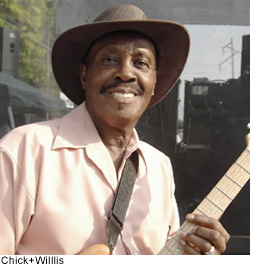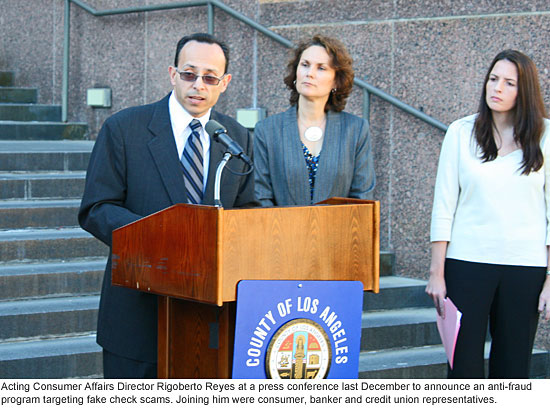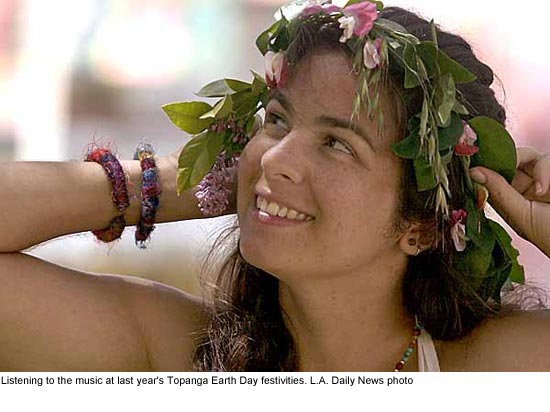Even Topangans get the blues
April 28, 2011
 It might be tough to feel the deepest “blues” while immersed in the lush nature of Topanga’s Will Geer Theatricum Botanicum, so maybe just shoot for a bittersweet feeling instead.
It might be tough to feel the deepest “blues” while immersed in the lush nature of Topanga’s Will Geer Theatricum Botanicum, so maybe just shoot for a bittersweet feeling instead.
The Topanga Blues Festival has presented legends and upstarts alike at the Theatricum for 28 years. This year it’s headlined by Blues Hall of Fame inductee Chick Willis, a.k.a. “The Stoop Down Man,” who brings his upbeat and humorous version of the blues all the way from Atlanta. The lineup also includes the Lynwood Slim Blues Band, Gregg Wright and Sean Lane. Of course, nothing goes better with blues than barbecue, and there will be plenty available for purchase at the festival.
The organizer and beneficiary of the event is the Southern California Blues Society, a non-profit group dedicated to promoting American Blues tradition in Southern California.
The Theatricum Botanicum is a natural outdoor auditorium and a sanctuary for performance arts. The theater seats 300 in an intimate, park-like setting. Visit their website for a summer schedule of plays, events and educational programming.
The Topanga Blues Festival takes place May 1 from 11 a.m. to 4 p.m. Tickets are available online and cost $28.50 for Blues Society members and $38.50 for non-members. Organizers recommend buying tickets in advance because they are limited.
The Theatricum is located at 1419 North Topanga Canyon Boulevard. Parking is available in the lot for $5 or on the street for free.
Posted 4/28/11
Getty takes a trip to Paris
April 28, 2011
 Dickens’ famous opening to A Tale of Two Cities—“It was the best of times, it was the worst of times”—describes the vast wealth disparity in pre-revolution France. If you’d like to check out “the best of times” side of the equation, visit the Getty Center as it presents the opulent lives of France’s mid-18th century elites in “Paris: Life & Luxury.”
Dickens’ famous opening to A Tale of Two Cities—“It was the best of times, it was the worst of times”—describes the vast wealth disparity in pre-revolution France. If you’d like to check out “the best of times” side of the equation, visit the Getty Center as it presents the opulent lives of France’s mid-18th century elites in “Paris: Life & Luxury.”
The exhibit, on international loan to the Getty, showcases objects that were part of a typical day in the life of the bourgeoisie—furniture, fashion, instruments, books, paintings, sculptures, and more. Parisian craftsmanship during this period is considered masterful but unfamiliar, obscured by the violent revolution that followed.
The Getty Center will host a series of free events related to the exhibit. Seats at the lecture and cabaret performance this Saturday have already filled, but more lectures, dance, and film focused on animating the culture of the period are planned for the coming months.
The exhibit lasts from April 26 to August 7. Admission to the museum is free; although there is a $15-per-car parking charge (motorcycles and bikes park for free). Hours and directions are available on the website.
Posted 4/28/11
This budget’s a labor of love
April 22, 2011
In some parts of the nation these days, public sector unions are battling a perception that they’re the bad guys—out only for themselves as government budgets dwindle and services wither. But in L.A. County, unions have another rep—as recession-savvy partners whose sacrifices are helping to save the day.
County unions, now going into their 3rd year of working without raises, have emerged as some of the improbable heroes of a proposed $23.3 billion budget which—at least for now—includes no layoffs or furloughs. The county’s situation is particularly striking in comparison to the city of Los Angeles, where generous employee pay raises gave way to a dire economic picture including both layoffs and unpaid furlough days.
People on both sides of the bargaining table attribute the county’s situation to sound financial stewardship before the economic collapse and to long-running collaborative relationships between the unions and the county’s elected and executive leadership.
Not to mention the fact that union leaders—correctly, as it turns out—anticipated that the downturn would be long and ugly, not a short-term blip, and could jeopardize jobs.
“We saw what was coming, and it wasn’t looking good,” said Steve Remige, a director of the Association for Los Angeles Deputy Sheriffs (ALADS) who was the organization’s president during the most recent rounds of contract negotiations. Doing without raises, under the circumstances, “was an easy sell to the membership.”
It was harder over at SEIU Local 721, where some members at least initially expected a shorter-lived recession. “Some thought it would be over in a year or two,” said Bob Schoonover, president of the local, which represents some 55,000 county workers “from custodians to nurses.” By toughing it out and agreeing to no raises, however, the members not only helped avoid layoffs in their ranks but also contributed to keeping public services afloat, he said.
“We agreed to a series of no-raise contracts…in order to keep services going at the level they need to be,” Schoonover said. “The county and SEIU have had a very good working relationship for the last few years. That’s to the benefit not only of the members but to the public.”
Because of the sheer size of the county workforce—salary and benefits for nearly 100,000 employees, most of them unionized, account for 40% of the budget—even a tiny cost-of-living adjustment carries a huge price-tag.
As it is, the proposed budget unveiled this week reveals a $220.9 million shortfall that the chief executive office says can be eliminated through, among other things, one-time funding, the elimination of vacant positions and department cutbacks—but without forcing anyone into unemployment.
And for that, Supervisor Zev Yaroslavsky and others give substantial credit to the unions and their leadership. “They made a tough decision for themselves and for their members,” he said.
Labor and management both credit the long tenure of the board majority—and the trust that has flowed from it—with creating the climate for union concessions.
“Good labor relations demand a certain longevity,” said Blaine Meek, counsel for the California Association of Professional Employees, which represents some 2,700 county employees in departments such as Public Works, Treasurer-Tax Collector and Assessor.
So when the Board of Supervisors made it clear that without union cooperation, the county’s fiscal health would suffer and workers would lose their jobs, the unions decided to play ball.
“At the end of the day, they went along with us,” Yaroslavsky said. “I think they wanted to do something statesmanlike. And the proof of the pudding is three years later, we haven’t laid off anybody and we haven’t furloughed anybody.”
Jim Adams, chief of employee relations for the county, said the current season of labor-management harmony is no mere “kumbaya thing.” He acknowledged that labor agreements in recent years have asked county employees to do without raises at a time when workloads are increasing and vacancy and promotional freezes are in place.
“These sacrifices have strained our employees at times,” Adams said.
But those sacrifices looked more palatable when compared to what was happening in other places.
“People were seeing layoffs and furloughs all around us,” Adams said. “They were seeing worse things going on elsewhere than a salary freeze.”
The austerity contracts started in early 2009 with ALADS and the county’s other public safety unions. Setting the stage for the negotiations with other county unions that would follow, they accepted no raises and a 50% reduction in the amount the county pays in deferred compensation. But they won a larger county contribution to their rising health insurance premiums.
Now, with small signs of a recovery on the way, county union members are keeping one eye on the local economy and the other on their union brethren around the nation.
“They see that public employees have been made a target in a bad economy, even as the demand for government services is rising,” said Meek, of the California Association of Professional Employees. “Yes, our members are anxious. Even their voice in collective bargaining is under attack.”
But in their dealings with L.A. County, there is a sense that sacrifices in bad times will be rewarded when things get better.
“There is an expectation,” Meek said, “that when conditions improve that we will go forward and get back to pay raises and addressing other issues.”
Or, as the SEIU’s Schoonover puts it: “We’re all hoping we return to whatever normal is.”
Posted 4/21/11
New health report takes aim at alcohol
April 21, 2011
A newly released study by Los Angeles County’s Department of Public Health paints a grim picture of the rippling impact of alcohol sales and consumption across the region, disclosing, among other things, that close to 1 in 5 high school students reported at least one episode of binge drinking in the past month.
The report draws a direct correlation between communities with a high number of alcohol outlets and a variety of harms, including violent crime, motor vehicle crashes and alcohol-related deaths. These neighborhoods, mostly in poorer areas of the county, are up to 10 times more likely to have increased rates of violent crime and three times more at risk for alcohol-involved crashes, according to the study, called “Reducing Alcohol-Related Crimes in Los Angeles County.”
“Each year, 2,500 people in the county die from alcohol-related causes, with the loss of approximately 78,000 years of potential life,” Public Health Director Dr. Jonathan E. Fielding said in an introduction to the report. “In addition to the devastating personal and societal effects of alcohol abuse on individuals, families and communities, excessive alcohol consumption costs Los Angeles County an estimated $10.8 billion annually, or roughly $1,000 for every resident.”
Fielding said in an interview that he was particularly troubled by the high rate of binge drinking among younger people.
“They have less experience and don’t understand the limitations of what they can and cannot do,” Fielding said. “We already know they are risk-takers in the way they drive at higher speeds. It’s a very bad combination, one that every family should be concerned about. It’s very disturbing.”
The report, which examines the density of alcohol outlets in 117 communities and cities across the county, calls for a series of measures aimed at reducing alcohol availability and consumption.
Fielding specifically called for an increase in alcohol taxes through legislation or ballot initiatives. “We should be doing everything we can to reduce consumption,” he said. “We need to change the economics.”
California’s last increase in alcohol taxes, he said, occurred in 1991. The study states that only Louisiana, for example, has a lower wine tax than California.
For the complete study, including a community-by-community ranking of alcohol outlet density and related harms, click here.
Posted 4/21/11
For consumer crusaders, it’s personal
April 21, 2011
Chances are you’ve never heard of Rigoberto Reyes—unless you’ve been ripping off the public.
Reyes heads Los Angeles County’s consumer affairs department, which for three decades has been chasing scammers of all sizes and stripes—from shady car dealers, to unscrupulous real estate operators, to fake attorneys and fly-by-night wedding photographers. Each year, the widely praised department receives hundreds of thousands of calls from consumers seeking help.
But now Reyes and his department find themselves not only advocating for the public, but also making a behind-the-scenes pitch for themselves.
This week, the county’s chief executive officer, William T Fujioka, recommended that the Department of Consumer Affairs be folded into a bigger agency to reduce redundancies and increase efficiencies as part of a multi-faceted effort to eliminate a $220 million deficit in the county’s next fiscal year budget.
Fujioka has estimated that merging consumer affairs with the Department of Community and Senior Services would save $346,000 in salaries and benefits by cutting four administrative positions, on top of a $164,000 cut that would take effect even without the proposed consolidation.
Reyes says that while he appreciates the CEO’s budget strategies, his department can achieve the same savings on its own and should remain independent—“a sort of beacon for consumers with problems.”
“I’m sensitive to the needs of the CEO,” says Reyes, who, as the department’s acting director, reports to Fujioka. “It’s not us versus them. But there are different ways to get to the same place. We’ve proven over the past 30 years that we know how to protect consumers. Why change it?”
That view has found a receptive audience with the Board of Supervisors. On Tuesday, acting on a motion by Supervisor Zev Yaroslavsky, the board instructed the CEO to defer the consolidation and come up with other ways for consumer affairs to save the same amount. The board set a deadline of June, when it’s scheduled to consider the budget.
The motion, which calls consumer affairs a “high performing department,” notes that the jobs targeted for elimination are “unique” to the agency and may not be replicable by employees in the Department of Community and Senior Services. What’s more, according to the motion, a consolidation may risk the ability of consumer affairs to receive settlement funds and other external money.
Reyes says he knows exactly where the department’s lifeline can be found: in a trust account holding $5 million that the department received in 2006—the leftover proceeds of a consumer lawsuit settlement in San Diego. That payment flowed here at the recommendation of the state attorney general’s office, even though consumer affairs wasn’t involved in the case.
“We were saving the money for a rainy day,” Reyes says. “Today’s the storm.”
The money can be used only for “new or enhanced programs,” Reyes says, explaining that additional responsibilities would be given to employees whose jobs had been classified as redundant and targeted for elimination under the merger plan.
And that, he says, shouldn’t be hard, given the expanding ambitions and soaring workload of the 46-person department. For example, before the economic meltdown in 2007, Reyes says the department received 44 complaints about fraudulent foreclosures. Last year, that number soared to 545.
“When the economy slows, the need for our services goes through the roof. That’s when the scammers head out,” says Reyes, who joined the agency as a student worker in 1995.
Reyes says that at least twice before during tough financial times, plans had been drafted to merge consumer affairs with other departments—once after Proposition 13 in 1978, and again in the 1990s. But both times the Board of Supervisors determined “it didn’t make sense for consumers.”
“There are very few local departments of consumer affairs at the local level and they’re admired for what they do,” Reyes says. “They do incredible work that wouldn’t otherwise be done.”
Posted 4/21/11
Voyage to the center of the Earth Day
April 21, 2011
This weekend, you may hear the rumble and hoot of a distant drum circle inviting you to Topanga Earth Day.
Heed the call and you’ll find yourself transported to Los Angeles County’s Earth Day epicenter as Topanga Canyon lives up to its nature-centric reputation and throws a planet-loving bash to remember.
Where else on the planet, after all, can you spend a weekend building a tipi, making a seed ball, dropping by a Healing Arts Tent, listening to the Grateful Dead’s drummer and sipping some locally-produced wine—all in a one-of-a-kind community that’s just miles from Hollywood and the Westside on the map but a galaxy away in spirit?
Topanga’s annual holiday celebration began in 2000, as locals celebrated after a volunteer cleanup of Topanga Creek. Now the full-fledged festival lasts all weekend and includes musical acts from across the globe. The creek is so pristine that it doesn’t need cleaning this year, so the volunteers have shifted their focus to local beaches instead.
 Many Topangans view themselves as stewards of the land, dutifully repaying the earth for the magic and majesty it bestows upon them in the form of fabled creeks and craggy mountains. Darkened by the canyon and a dearth of streetlights, it’s one of the rare places close to the city where you can still clearly see the night stars.
Many Topangans view themselves as stewards of the land, dutifully repaying the earth for the magic and majesty it bestows upon them in the form of fabled creeks and craggy mountains. Darkened by the canyon and a dearth of streetlights, it’s one of the rare places close to the city where you can still clearly see the night stars.
“We are surrounded by 200 square miles of state park,” notes Stephanie Lallouz, organizer of Topanga Earth Day. “Because of that, most of us in the community are pretty in tune with nature. We drive slower to protect the coyotes and bobcats.”
A bohemian spirit and ‘60s ethos lingers on in a place where folks like Joni Mitchell, Jim Morrison, Neil Young, and Marvin Gaye once lived, played or made music. And Earth Day 2011 seems a fine time to discover what they—and Topanga’s current eclectic crop of residents—have long known about this particular place in the sun.
The celebration begins Friday, April 22 from 7-10 p.m. with an eco-art show opening, wine tasting, and jazz. The main event is Saturday and Sunday, and it lasts from 10 a.m. to sunset both days. There will be music, speakers, workshops, a children’s activity area, and plenty more.
Organizers take pride in the multicultural nature of the jubilee, so you can expect to find many parts of the planet represented. Musical acts hail from places like Africa, Florida, Japan, Jamaica, Israel, Jordan and India, to name a few. (Bill Kreutzman, original drummer for Grateful Dead, is also expected to make an appearance.)
Planned festivities are educational (learn to “plant native,” compost, and use earth-friendly technology), entertaining (a band that uses a 30-foot string setup, belly dancers, and wine tasting), service-oriented (beach clean-up, tree planting), creative (recycled art, flag painting), and esoteric (chanting, reiki).
You can make seed balls and learn ways to conserve water. You also can practice yoga in the morning, have an organic vegetarian lunch, and participate in a sacred Japanese tea ceremony. Along the way, learn to build a tipi and participate in a guided philosophical discussion inside of it.
For a full rundown of activities, visit the Topanga Earth Day website.
For entry, there’s a $12 suggested donation. Eco-friendly non-profit organizations will receive 60% of the proceeds, with the remaining 40% going towards next year’s event. This year’s beneficiaries include Doctors Without Borders, Sea Shepherd and the Topanga Community Club.
The event is sponsored by diverse community, government, and business groups, who will host booths with their own offerings. L.A. County Department of Public Works’ Waterworks program will be on hand with free giveaways as they educate the public on methods of water conservation.
If you go, keep the health of the planet in mind. Rideshare to designated parking locations along Topanga Canyon Boulevard, then bike, hike, or take the free BioDiesel Shuttle up to the festival at the Topanga Community Club Fair Grounds, 1440 N. Topanga Blvd., Topanga, CA 90290.
Posted 4/21/11
Wild time in the mountains
April 21, 2011
 Why did the wildlife cross the road?
Why did the wildlife cross the road?
To get to the other habitat – or maybe just because the Santa Monica Mountains offer such an inviting playground for wilderness creatures of all sizes, shapes and species.
On Saturday, April 23, 2011 at 4 p.m. join fellow explorers at Franklin Canyon Park’s Sooky Goldman Nature Center for “Wildlife Crossroads,” an entertaining and informative guided two-hour ramble with a knowledgeable volunteer who will point out things like telltale paw-prints and other subtle signs of animal travelers passing by.
Franklin Canyon Park is located just south of Mulholland. Here you’ll find full program information and a detailed map. For a more comprehensive look at the wide variety of places and activities to be found across the Santa Monica Mountains, visit LAMountains.com, a service of the Santa Monica Mountains Conservancy, the state agency charged with protecting, preserving and expanding our open spaces for future generations to enjoy.
Posted 4/21/11
Pop goes the realism in Santa Monica
April 21, 2011
Yet another intriguing spin on post-modernism, the Pop Realism movement draws on an unsettling but fascinating mix of photographic literalism and jarring surrealistic elements. Playful, if not necessarily lighthearted, today’s Pop Realists range from the austere yet vibrant mid-century architectural landscapes of Tom McKinley and the goofy gals-at-work whimsy of Kelly Reemtsen to the sly social commentary of Dave Lefner and the darker, stranger tones of Hooper Turner.
This weekend, Skidmore Contemporary Art gallery at Santa Monica’s Bergamot Station Art Center opens a new month-long exhibit showcasing these new artists and other leading lights of the Pop Realist movement. Skidmore is located in the Bergamot complex at 2525 Michigan Avenue, B5; gallery hours are Tue-Sat 11a-5p, and there’s ample free parking. Here’s the info to plan your visit.
Posted 4/21/11
Democracy and the human spirit
April 14, 2011
 There’s a certain conventional wisdom that Third World countries can’t understand or handle democracy. But anyone who harbors such notions has not witnessed, as I did last week, the people of one such nation, Nigeria, calmly standing in line for hours in the brutal heat to cast ballots in the exercise of self governance.
There’s a certain conventional wisdom that Third World countries can’t understand or handle democracy. But anyone who harbors such notions has not witnessed, as I did last week, the people of one such nation, Nigeria, calmly standing in line for hours in the brutal heat to cast ballots in the exercise of self governance.
Africa’s most populous country, Nigeria is ravaged by poverty. Still, its residents just participated in arguably their nation’s most successful national assembly elections. This weekend, they’ll turn out en masse to elect a president with hope and pride.
Now that I’ve returned to the world of technology, I’ve downloaded some pictures and video I shot during my week in Nigeria as an election observer with the Washington-based National Democratic Institute. I hope they give you a sense of the passion that millions of people beyond our own borders hold for the development for democracy in their lands.
Counting the votes: A video by Zev of ballots being tallied in Iolin, the capital of Kwara state.

Posted 4/14/11






























 Check for the latest closure information
Check for the latest closure information








